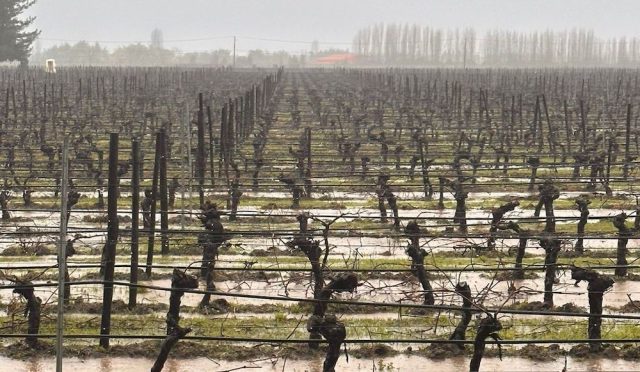El Niño unleashes severe floods on Chile’s vineyards
Heavy rainfall in Chile since last week has caused severe flooding, impacting several of Chile’s wine regions. Amanda Barnes reports.

Due to the El Niño phenomena, some regions had over 350 mm of rain within less than a week — greater than the average annual rainfall for Chile’s capital city, Santiago.
At least four people have died in the floods and tens of thousands have been evacuated as the Chilean government announced a state of catastrophe. The worst of the flooding has been in the regions of Maule, Itata, Curico and Colchagua, with many valley floor vineyards completely inundated with water.
Although there are numerous reports of flooded vineyards, including Licantén and Apalta, the most substantial and longterm damage has been to buildings and animals. Viña Gonzalez Bastías in Maule was completely destroyed by the floods: “We have had extreme damage, with the complete loss of our winery,” explains owner Daniela Lorenzo, whose 200-year-old vineyard and small family winery is located near the burst banks of the River Maule.
“The roof collapsed and we’ve lost the adobe walls of our winery and all our supplies. It is like a tsunami.”
Partner Content
Daniela and her husband José Luis Gómez will need to rebuild their winery from scratch, and are currently putting together a GoFundMe campaign to try to recover from the disaster.
Although the El Niño cycle is normal, the furious nature of the flooding can be considered a result of the warmer temperatures due to climate change. “The problem is that the temperatures were higher than usual so we didn’t get snow in the Andes, but rain,” explains Eduardo Jordan, winemaker for Miguel Torres Chile with vineyards throughout the effected regions.
“The volume of rain brought down lots of sedimentary material from the mountains, bursting river banks and causing entire houses to be wiped away. The worst effected have been the regions stretching from Rancagua to Chillan, because they are regions with lots of rivers.”
“Older, established vineyards should recover from the flooding,” adds Jordan. “The risk now though, for the vineyards, is that we have a strong frost predicted for this weekend and the week coming, and don’t have the infrastructure to fight it.”
The impact of the floods are yet to be fully realised, as the water retreats and agronomists can take stock of the damage to infrastructure.
Related news
VIK expands its WineLAB initiative to celebrate emerging talent
10 years of Tayu: Inside Chile’s most unique grower–winery collaboration




